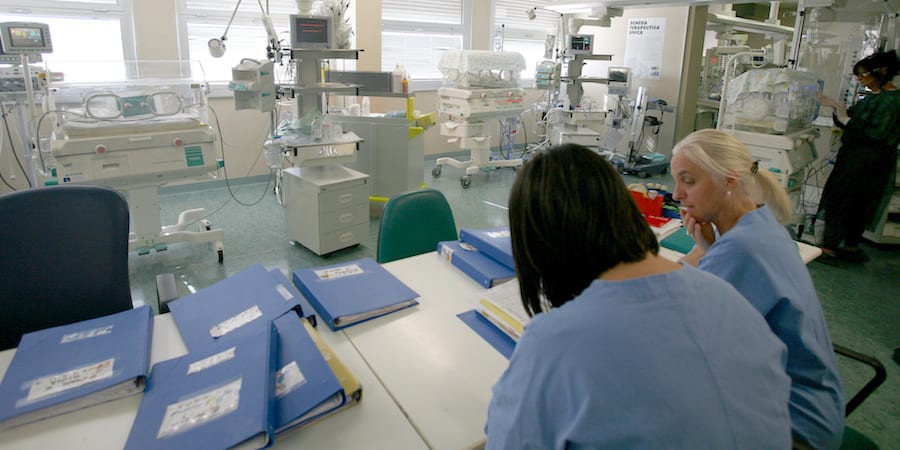
Lean thinking reduces the risks inherent to innovation
COLUMN – In the first of a new series, Boaz Tamir explains how understanding the knowledge and development capabilities of our team can provide the foundations for more dynamic and safer innovation.
Words: Boaz Tamir, Founder & President, Israel Lean Enterprise
The development of a new business, product or service is a journey to the unknown.
Because of the risks they take in their attempt to succeed, entrepreneurs who survive the development phase need great praise. But what is the secret of their success? In an ever-changing market, development plans also need to be ever-changing: we need to be able to modify them at an accelerated pace in order to adjust them to a changed reality.
There is no doubt that without tools like innovativeness, flexibility and the ability to learn and improvise our chances to succeed are extremely slim.
This often leads innovators and entrepreneurs, who understand the futility of investing time and energy in devising detailed multi-year programs, to forgo planning and embark instead on a journey of improvisation, correcting the course as they proceed.
Indeed, the limits of planning and the advantages of getting out into the field create the impression that it is possible to cut down on the initial development process and quickly move towards success. Even The Lean Start-Up, the immensely popular bestseller by Eric Ries, seems to support the idea of early field trials.
But we lean people know that the creation of a professional infrastructure (in terms of human skills, processes and development tools), along with familiarity with the market, is an essential component of success.
We know that starting out too early without sufficient preparation can lead to a waste of resources, putting the entire project at risk or even causing it to crash completely.
Going out into the field early is indeed necessary (in lean we talk about going to the gemba all the time), but in itself it is not sufficient to guarantee a successful product development process, let alone the creation of a new successful business. After all, the purpose of going to the gemba is to deepen our understanding of the system and to examine hidden areas of concern.
In the lean community, we are aware of the importance of organizational flexibility, of how critical the development of improvement capabilities is, and of the fact that mistakes along the way are a fundamental part of learning.
What I would like to do in this article is prove how adopting lean thinking makes it possible to lower the level of risk you face and improve your chances of success in your innovation-creating process.
The first step is examining our internal capacity for innovation and the current situation, while understanding the limits of our technological knowledge, of the professional and administrative capabilities of the development team, and of the quality of our people.
Just as casting determines the quality of a play, a symphony orchestra, or a sports team, so the quality of the human resources making up our team, along with our knowledge of the market, will determine our chances to succeed and the level of risk that the development of an innovative product, service or business plan entails. The price of skipping this stage of preparation and comprehensive study is high even for experienced production teams, let alone for startup organizations that are at the beginning of their journey.
According to the LPPD (Lean Product and Process Development - read about it in this interview with LPPD expert Jim Morgan) view, any worthwhile development program must be based on a preparatory study, known as kentou. This learning program, which includes devising the framework of development, its goals, and its staffing, can guarantee that the project will be completed on time, at the intended level of quality and at the right price.
The preparation necessarily focuses on the tension between what is desirable (which comes from the creation of value for the customer) and what is realistic (understanding the potential of the initiative and the innovation and the organizational limitations).
In other words, it is based on the study of the gaps between three foci:
1) The goal of the development (strategic "targets" & technical "requirements"). The desirable outcome here is an in-depth, empathic understanding of the needs of the customer. This is the nature of the market, and it is critical to identifying the developmental demands as they relate to the characteristics of the product. In contrast to the conscious desires of the customer, "deep customer needs" are complex, and customer themselves are often not aware of them. The role of the product developer or of the entrepreneur is to translate these needs into possibilities and technological potential for the customer's functional use and his social and emotional requirements. This is the essence of the development plan.
2) Conceptualizing the product as a system, its scope, boundaries, limitations, key processes, existing components and components that require development. This will focus the development team on breaking down existing boundaries and will delineate the risks and obstacles with which the managers of the product or of the development plan will have to cope.
3) Understanding the advantages and "limitations of power." The development process is executed by a system formed by human beings, with all their limitations. And we must not fail to understand these limitations - just like we must make sure that we are aware of the strong points. This is about mapping the professional knowledge (skills and expertise), estimating intellectual property and knowledge that are only available to us, and defining the maturity of the existing system. But it is also about engaging development resources (capital, personnel, professional knowledge, suppliers, partners), identifying the pace of development (the speed of the production of a learning cycle – or a "sprint" in agile jargon) while carrying out PDCA in order to focus on the issues that are key to success and in order to strengthen weak links.
The leadership of the development program, a startup entrepreneur or a manager (Toyota's Chief Engineer), must involve the marketing and production engineering systems, and it must focus on development goals. It will be difficult to engage the development team without first articulating a Chief Engineer Concept Paper, which will translate the needs of the customer, the technological vision, and the goals of development (based on the marketing strategy and brand design) into references for the development team.
This "Chief Engineer Concept Paper," followed by the learning stage (I talk about it here), provides a stable starting point for the journey towards the development of a product. Bypassing these stages – that is, forgoing a clear, agreed-upon, and understood definition of the goals of the development, its obstacles and risks – could cause the team to invest its efforts in the development of a product that the market has not defined as valuable.
Conceptualizing the goals of development marks the beginning of the stage of learning about the system, in all its complexity, and clearly defines the boundaries that separate what is known from what is not known. That is how the developmental and innovative space is defined, as well as the points at which a known boundary will be crossed.
Thus the learning stage deals with mapping and marking the gaps (risks) between what is desired (by the customer) and what is realistic (what is known) with regards to technology, as well as the way to manage resources.
Understanding these gaps and the limitations of power will provide a directional mirror and a road map for a dynamic development process. In addition, it will significantly lower the level of risk involved in the development as we cross into uncharted territory.
Revolutions are not created out of nowhere. The development of a new product or business is an evolutionary process and the roots of groundbreaking innovation can be found in the cultural legacy that has been left to us by generations of entrepreneurs.
THE AUTHOR

Read more


FEATURE – Effectively applying just-in-time and achieving flow is impossible without leveling production first. Yet, most companies seem to think this is impossible because demand is so variable… but is it really?


INTERVIEW – Last month we caught up with Toyota veteran Art Smalley in Las Vegas and discussed with him the role of leadership in a lean transformation and the four different types of problem solving he talks about in his new book.


FEATURE – Another month, another story of a lean project told by the Siena hospital front-line folks. This time we take you to the Intensive Care Nursery, whose layout was transformed to provide better care to premature newborns.


CASE STUDY – This Dutch SME is transforming its picking operation – partly with the introduction of a U-shaped design – to increase the number of orders it can fulfil every day.

